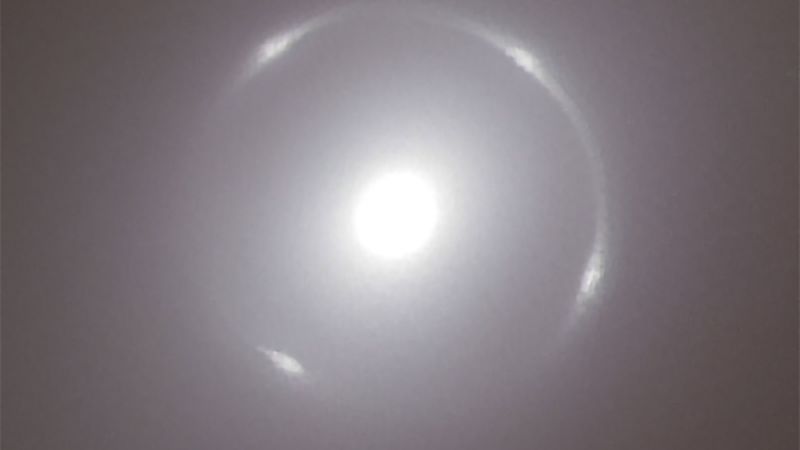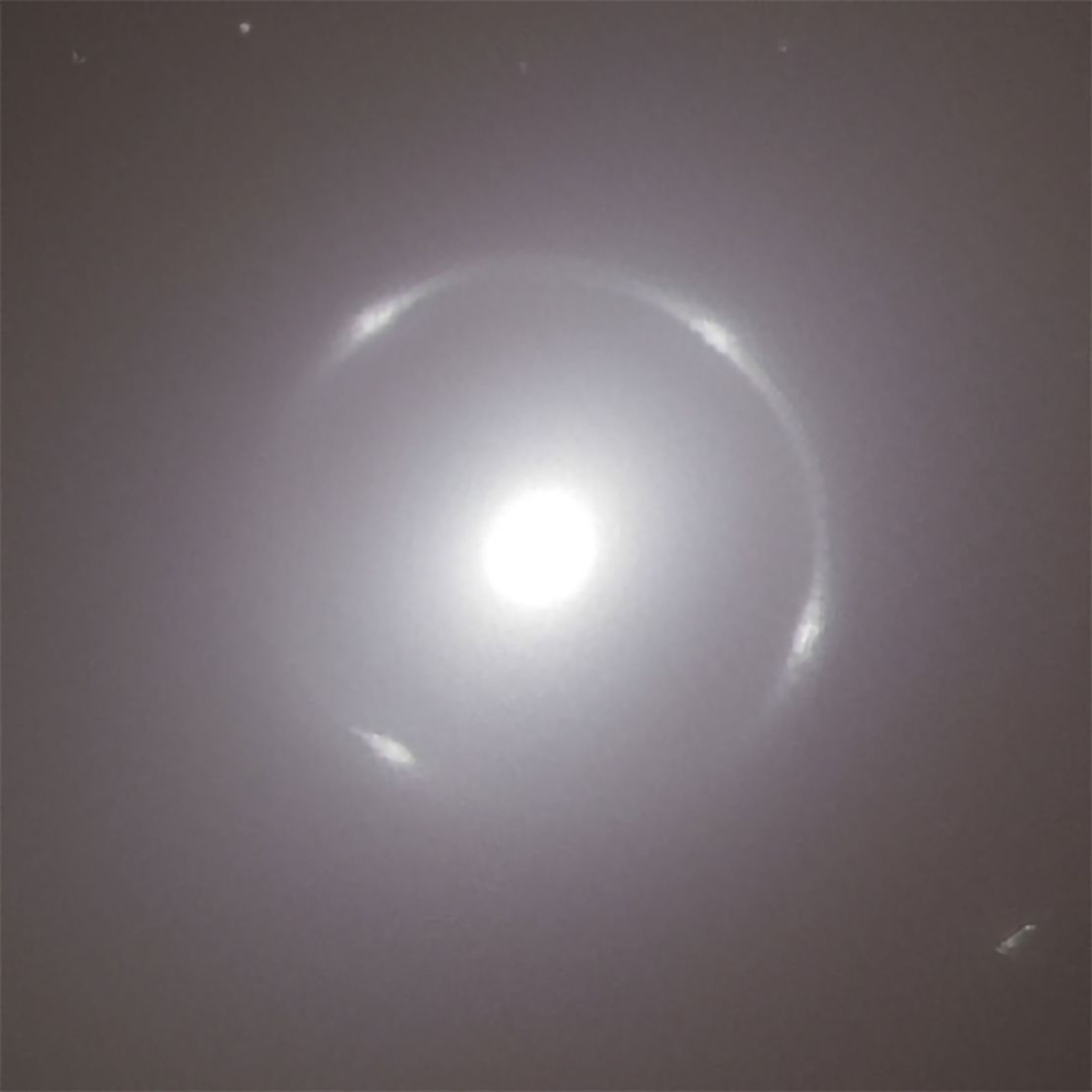
Subscribe to CNN’s Wonder Theory newsletter for the latest in science.Discover exciting news about the universe, intriguing findings, and scientific breakthroughs.
CNN
—
Scientists from the European Space Agency’s Euclid mission have serendipitously observed a unique cosmic event, unveiling an extraordinary sight of the universe.
This fascinating effect is linked to the initial data collected from the Euclid telescope, which was launched in July 2023 to explore the hidden corners of the dark universe—regions of the cosmos that are invisible to our eyes. During the early calibration and testing phase, when first images returned to Earth, Euclid Archive Scientist Bruno Altieri discovered what appeared to be an Einstein ring.
Einstein rings manifest when light from a remote galaxy curves to create a luminous ring around a nearer object. This phenomenon is named after Albert Einstein, whose theory of relativity foretold that light could bend around massive cosmic structures.
Euclid initially documented an image of NGC 6505, a widely studied galaxy located approximately 590 million light-years away in 2023. A light-year measures the distance that light travels in a year, which equals about 5.88 trillion miles (9.46 trillion kilometers).
For the first time, a radiant ring has been detected around this galaxy using Euclid’s highly advanced instruments. The ring is formed from distorted light from a hitherto unobserved galaxy situated 4.42 billion light-years away and has yet to be named.
“I analyze the incoming data from Euclid,” Altieri remarked. “From that first observation, I noticed it, but further observations of the area helped us to clearly identify a pristine Einstein ring.”
Researchers have conducted a comprehensive examination of the Euclid images that reveal intricate details about the Einstein ring, findings published in the journal Astronomy & Astrophysics on Monday. Understanding this phenomenon could aid scientists in solving some of the universe’s enduring puzzles, particularly regarding dark energy—the mysterious force behind the accelerated expansion of the universe.
“It’s fascinating that this ring was observed in a well-known galaxy first cataloged in 1884,” stated Valeria Pettorino, ESA Euclid Project Scientist and study coauthor. “Astronomers have been aware of this galaxy for a long time, and yet we never detected this ring before. It shows how powerful Euclid is in identifying new phenomena even in familiar regions. This exciting discovery bodes well for the future of the Euclid mission, showcasing its remarkable capabilities.”
The galaxy NGC 6505 was initially described by American astronomer Lewis Swift in 1884, likened to a bright yellowish blob, with the details of the ring obscured by atmospheric conditions, as noted by lead study author Conor O’Riordan, a postdoctoral scholar at Germany’s Max Planck Institute for Astrophysics.
“By utilizing Euclid’s space-based observation capabilities, which lack the atmospheric disturbances found on Earth,” O’Riordan explained via email, “we are able to capture details and reveal elements that were previously invisible.”
Einstein rings exemplify the process of strong gravitational lensing, which acts like a cosmic magnifying glass, exposing celestial objects and light from distant galaxies that would typically remain undetected.
“As light from a distant galaxy travels through the cosmos toward Earth, it generally follows a straight trajectory,” he noted. “However, when a massive object, such as another galaxy, obstructs its path, the immense gravitational pull of that galaxy can bend the light’s course. This foreground galaxy acts like a ‘lens,’ concentrating the light from the background galaxy into a distorted but highly magnified ring-like image of the more distant galaxy.”

To create an Einstein ring, several conditions must align: a massive foreground galaxy must be perfectly positioned relative to the background galaxy as seen from the telescope.
The occurrence is so rare that fewer than 1% of galaxies exhibit an Einstein ring, O’Riordan observed. Currently, between 100 to 1,000 objects resembling Einstein rings are known, but only a limited number have been examined with the level of detail that the Euclid telescope can provide.
While a distance of 590 million light-years may seem vast, it is relatively nearby in astronomical terms, placing this instance among the few Einstein rings located near our planet.
“The background galaxy in this lens is nearly ideally aligned with the foreground galaxy, an exceptional occurrence,” noted O’Riordan. “This produces the breathtaking complete ring captured in the image. This unique alignment results in a stunning visual and serves as a reminder of the universe’s beauty.”
This specific Einstein ring will enable astronomers to delve into the secrets of the distant, uncharted galaxy, allowing them to assess its mass, composition, star production, and evolutionary history, he elaborated.
Astronomers have a keen interest in investigating Einstein rings because they offer valuable insight into dark energy and dark matter. Although dark matter has yet to be directly observed, it is believed to account for 85% of all matter in the universe.
“This dark matter does not interact with light, yet it exerts a gravitational influence,” O’Riordan explained. “Gravitational lensing is therefore sensitive to the existence of this dark matter, enabling us to indirectly detect it. For instance, the dimension of the Einstein ring is influenced by the mass present in the galaxy. By estimating the mass based on visible stars (how luminous the galaxy appears), we typically observe smaller Einstein rings. It is only when we factor in the undetected dark matter that we can accurately predict the size of the observed ring.”
Newly discovered gravitational lenses, like the Einstein ring, can illuminate the workings within galaxies, stated Justin Spilker, an assistant professor in the physics and astronomy department at Texas A&M University, who was not part of this study but has previously observed an Einstein ring with the James Webb Space Telescope as noted in a June 2023 research paper he co-authored with an international group of scientists.
“The size of the Einstein ring relies solely on the total mass surrounding the galaxy’s center,” Spilker detailed in an email. “The composition of that mass—be it dark matter, stars, or otherwise—is inconsequential; it is the total that matters! In this case, the researchers discovered that approximately 90% of the mass consists of stars, with around 10% attributed to dark matter (with no comment on potential cat contributions), which is quite typical in the inner regions of galaxies.”
The Euclid mission aims to survey billions of galaxies across more than a third of the observable sky over a six-year period. This 1.2-meter-wide telescope intends to investigate dark matter and dark energy, ultimately contributing to the largest and most precise three-dimensional map of the universe. O’Riordan noted that throughout this expedition, the number of identified Einstein rings is likely to increase exponentially.
“Euclid is set to transform the field with an abundance of unprecedented data,” O’Riordan commented. “We anticipate an influx of Einstein rings beyond what we could ever possibly analyze, bringing fresh challenges in its wake.”









